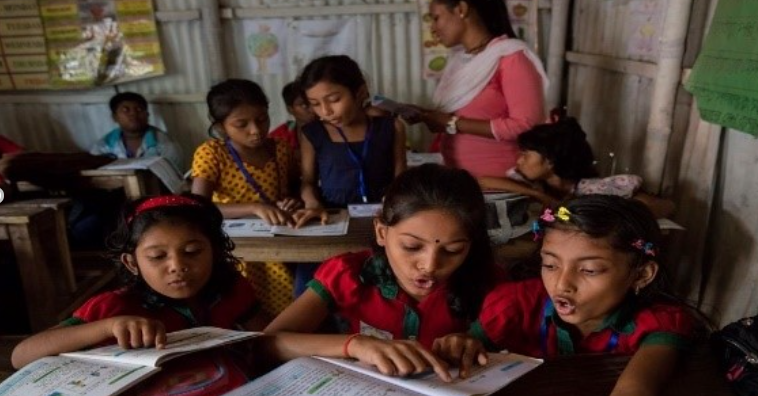School closures as a result of COVID-19 pandemic have contributed to the worsening of learning poverty and the learning crisis. At the core of the learning crisis, there is an instructional crisis. Low learning outcomes are the result of several weaknesses within education systems, which create less than ideal learning environments.
The learning crisis often results from the failure to deliver sufficient amounts of high-quality instruction, whether due to school closures, poor education quality for those enrolled, or the privation of instruction out-of-school children suffer. The deficiencies that lead to the learning crisis may be seen as falling into three groups: curricular deficiencies, pedagogical deficiencies, and support deficiencies.
Development and delivery of a Compendium of Structured Lesson Plans and Tools for Improvement of Early Grade Reading Instruction
One promising way to address learning poverty is through structured pedagogy —developing detailed lessons plans for teachers and providing training and coaching on how to utilize them. The World Bank’s Curriculum, Instruction, and Learning (CIL) team has developed a suite of tools to strengthen curricular and instructional practices at the global and country level as part of a Compendium of Structured Lesson Plans.
The CIL team has delivered a set of global public goods and implemented country-tailored interventions that operationalize the best available evidence on the science of reading through structured pedagogy, instructional coherence, and effective language of instruction policies:
- Early Grade Reading Rainbow: A Quick Guide for Reducing Learning Poverty describes the different stages of early grade reading instruction using a rainbow model and presents the key principles education officials should keep in mind as they develop early grade reading literacy programs.
- How Children Learn to Read: Toward Evidence Aligned Lesson Planning presents an explicit overall architecture or "model" for reading instruction in terms of the developmental stages or milestones in learning to read.
- How to Provide Effective Reading Instruction outlines the critical ingredients of effective literacy instruction – a high-quality curriculum, sufficient amounts of instruction, and quality of instructional procedures—while offering specific examples of instructional activities that readers can use to inform lesson planning.
- A Compendium of Global Resources as a library of over 700 resources in 42 languages provides real world examples of teacher guides, lesson plans, assessments and other texts that have been used for reading instruction.
- Analysis of Instructional Materials in Brazil offers a deep dive into the content of lesson plans from selected municipalities and states in Brazil, analyzing the extent to which they are aligned to the subskills in the science of reading.
- Handbook for Literacy Lesson Planning outlines the key classroom practices that can be used to teach each of the subskills of learning to read, and provides examples of classroom activities for each.
The products of the Lesson Plans work program serve as a series of tools for countries to use to revise and improve their approach to EGR instruction for the first three years of schooling. The ultimate goal is to develop, or in some cases enable the development of, lesson plans that embody an improved scope and sequence aligned with explicit learning goals, utilizing the principles from the science of reading, and integrating the elements of teacher professional development.
As part of this process, the team has designed an architecture for EGR that outlines a progression in learning to read informed by the science of learning. The levels of progressions are color coded to make it easier to communicate reading abilities, inform teaching at the right level, inform structured pedagogy design, and inform reading materials and digital software design. This work is also expected to inform tech app developers.
On the implementation side, the CIL team has worked to apply these global public goods in three countries: Mozambique, Niger, and Pakistan. Our teams utilized the principles in our global public goods to rapidly produce structured or more structured lesson plans. This was accomplished by the provision of technical assistance to clients and country teams for review of selected existing materials (curriculum, textbooks, teacher guides, lesson plans), and for the production or refinement of lesson plans. Efforts are expected to culminate in the availability of sets of model lesson plans to be piloted in an instructionally coherent way.
The Lessons Plan work benefited from funding from the Global Partnership for Education (GPE).
